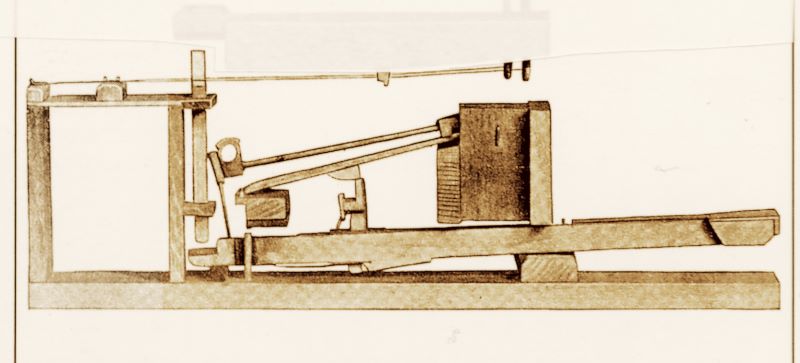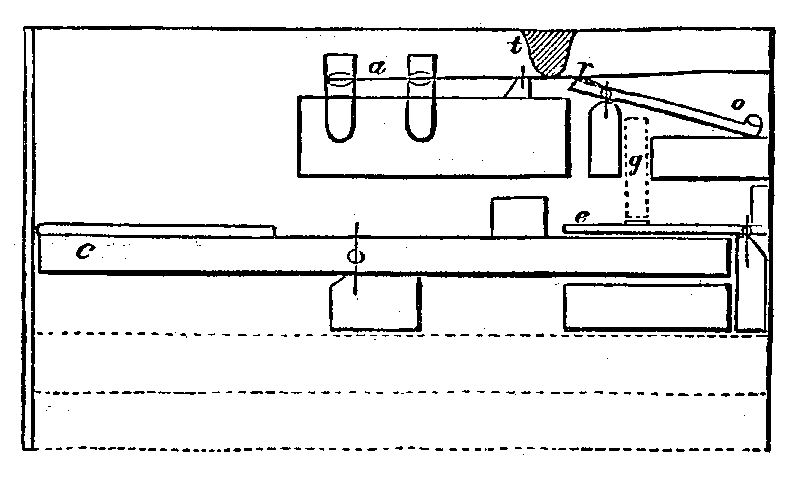18th Century
The development of the piano since Bartolommeo Cristofori’s genial invention is used in the 18th century by German piano manufactures. To this group belong Gottfried Silbermann, Friederici, Zumpe, Stein and many more. Many single steps of progress lead to the basis of uprights and grand pianos, from which an extensive piano industry developsed in the 19th century.

1700
In his workshop in Florence, Bartolommeo Cristofori (*1655) develops a keyboard instrument which allows to change the strength of tone with the intensity of the impact of the hammerhead. He uses instead of the jumpers which strike the strings, leather covered hammers, which use a mechanism to hit the strings like a dulcimer. The new construction gains the mark “Gravecembalo col piano e forte”, later shortened to “Piano forte”. The Cristofori mechanism is already astonishingly complete.
1705
In 1700, the German "Pantaleon" is already in existence. This is a large instrument with gut strings invented by Pantaleon Hebenstreit. It is used for dance music and can be compared to a dulcimer. In 1705 Pantaleon, regarded as the best dulcimer player of his time, came to Paris and had an especially large dulcimer built for his concerts with a five octave range.

1717
In 1717, the Christoph Gottlieb Schröter (*1699) from Dresden (Germany) introduces the model of a pianoforte to the royal court, supposedly developed from the so called "Pantaleon". The mechanism is simpler compared to the invention of Bartolomeo Cristofori.
1725
Gottfried Silbermann from Freiburg (Germany), a well known organ maker of the 18th century creates the first working pianoforte ever built in Germany.
1729
The organist and Thomas cantor Johann Sebastian Bach from Leipzig (Germany) finds faults in the soprano’s tone and the general difficult way of playing. Later Silbermann’s continuous improvements also found the full approval by Johann Sebastian Bach.
1742
In 1742, Johann Socher in Sonthofen (Germany) builds the oldest known virginal in the size of the once loved clavichord. A decade later, Ernst Friderici in Gera builds virginals in serial production, which he names ‚fortbien’. In 1745, Friderici has already constructed a vertical grand piano called ‚Pyramid’.
1753
Carl Philipp Emanuel Bach (*1714) publishes his ‚attempt to the true art of piano playing’, in which the clavichord is still preferred but the new forte piano is praised. Later, the pianoforte becomes the ideal keyboard instrument for the Italian melody according to Bach’s son. Carl Philipp Emanuel Bach therefore becomes the founder of actual piano music, later inspiring to Wolfgang Amadeus Mozart, Joseph Haydn and Ludwig van Beethoven.

1770
The piano craftsman Johann Andreas Stein from Augsburg (Germany) develops in 1770 a new mechanism, in which the hammer assembly is directly connected to the key. This striking mechanism with a simple release, also called ‚Vienna mechanism’ forms the technical basis for piano music of the Vienna classic. Mozart praises the purity of the tone of Stein’s piano. In 1780, the ‚German’ or ‚Viennese’ striking mechanism for the pianoforte has been established.
1782
The musician Johann Andreas Streicher, born in Stuttgart (Germany) makes a living first in Mannheim (Germany), and then in Munich (Germany) as a piano teacher. 1794 he marries the pianist Nannette Stein in Augsburg (Germany), the daughter of Johann Andreas Stein being a famous piano builder himself. Together they establish in Vienna the piano manufacturer "Nannette Streicher, neé Stein", which uses the name "Johann Baptist Streicher & Sohn" up to 1896.